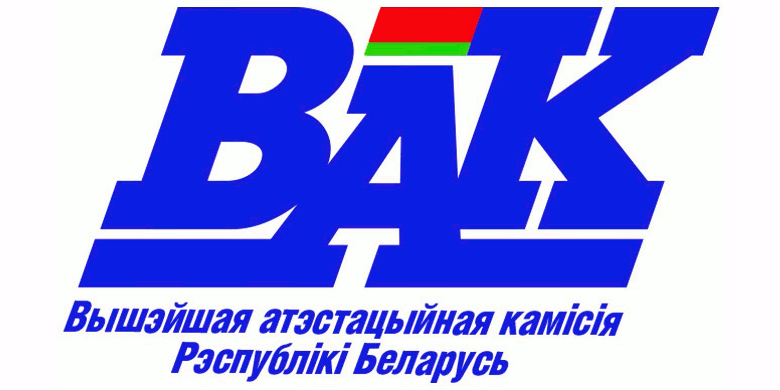Index of the cycle of money – the case of Belarus
Ключевые слова:
the cycle of money, Belarus, index of the cycle of moneyАннотация
The purpose of this paper is to apply the theory of cycle of money to the cases of Belarus. Prior works have determined the economic characteristics of the case of Latvia, Serbia, and Bulgaria, according to the concept of the theory of cycle of money. The index of the cycle of money suggests how an economic system should counteract a monetary crisis and studies how well-structured is Belarus’s economy. The estimations of the index of the cycle of money of Belarus are compared with the global average index of the cycle of money. The results reveal that Belarus is close to the average global value. Then, Belarus’s results show that it is a well-structured economy and can face an economic crisis. The applied methodology stands on the analysis of the theory, mathematical, statistical, and econometrical results. The current work is important as represents the strength of Belarus’s economy to a potential financial and economic crisis. This work is from a project for multiple countries. Finally, the recent decision of 15% minimum tax to the international companies complies with the Fixed Length Principle of the theory of cycle of money that developed the last years.
Библиографические ссылки
References
(ATO), A. T. O. et al. (2012) ‘Cheating the government’, Journal of Economic Psychology, 19(1).
Ainsworth, R. T. and Shact, A. (2014) ‘Transfer Pricing: Un Practical Manual China’, SSRN Electronic Journal. doi: 10.2139/ssrn.2375785.
Boland, L. A. (2014) The methodology of economic model building: Methodology after samuelson, The Methodology of Economic Model Building: Methodology after Samuelson. doi: 10.4324/9781315773285.
Caldara, D. et al. (2020) ‘The economic effects of trade policy uncertainty’, Journal of Monetary Economics, 109. Doi: 10.1016/j.jmoneco.2019.11.002.
Choi, J. P., Furusawa, T. and Ishikawa, J. (2020) ‘Transfer pricing regulation and tax competition’, Journal of International Economics, 127. doi: 10.1016/j.jinteco.2020.10336.
Constantinos Challoumis (2018a) ‘Analysis of the velocities of escaped savings with that of financial liquidity’, Ekonomski signali, 13(2), pp. 1–14. doi: 10.5937/ekonsig1802001c.
Constantinos Challoumis (2018b) ‘Identification of Significant Economic Risks to the International Controlled Transactions’, Economics and Applied Informatics, 2018(3), pp. 149–153. doi: https://doi.org/10.26397/eai1584040927.
Constantinos Challoumis (2018c) Methods of Controlled Transactions and the Behavior of Companies According to the Public and Tax Policy, Economics. doi: 10.2478/eoik-2018-0003.
Constantinos Challoumis (2018d) ‘THE IMPACT FACTOR OF HEALTH ON THE ECONOMY USING THE CYCLE OF MONEY’, Bulletin of the Transilvania University of Braşov, 11(60), pp. 125–136. Available at: http://rs.unitbv.ro/Bulletin/Series V/2018/BULETIN I/15_Challoumis.pdf.
Constantinos Challoumis (2018e) ‘THE KEYNESIAN THEORY AND THE THEORY OF CYCLE OF MONEY’, Hyperion Economic Journal, 6(3), pp. 3–8. Available at: https://hej.hyperion.ro/articles/3(6)_2018/HEJ nr3(6)_2018_A1Challoumis.pdf.
Constantinos Challoumis (2018f) ‘The Role of Risk to the International Controlled Transactions’, Economics and Applied Informatics, 2018(3), pp. 57–64. doi: I https://doi.org/10.26397/eai1584040917.
Constantinos Challoumis (2019a) ‘Journal Association “SEPIKE” Edition 25, October, 2019’, Journal Association SEPIKE, 2019(25), pp. 12–21. Available at: https://5b925ea6-3d4e-400b-b5f3-32dc681218ff.filesusr.com/ugd/b199e2_dd29716b8bec48ca8fe7fbcfd47cdd2e.pdf.
Constantinos Challoumis (2019b) ‘The arm’s length principle and the fixed length principle economic analysis’, World Scientific News, 115(2019), pp. 207–217. Available at: http://www.worldscientificnews.com/wp-content/uploads/2018/11/WSN-115-2019-207-217.pdf (Accessed: 21 April 2021).
Constantinos Challoumis (2019c) ‘The cycle of money with and without the escaped savings’, Ekonomski signali, 14(1), pp. 89–99. doi: 336.76 336.741.236.5.
Constantinos Challoumis (2019d) ‘The Impact Factor of Education on the Public Sector and International Controlled Transactions’, Complex System Research Centre, 2019, pp. 151–160. Available at: https://www.researchgate.net/publication/350453451_The_Impact_Factor_of_Education_on_the_Public_Sector_and_International_Controlled_Transactions.
Constantinos Challoumis (2019e) ‘The R.B.Q. (Rational, Behavioral and Quantified) Model’, Ekonomika, 98(1). doi: 10.15388/ekon.2019.1.1.
Constantinos Challoumis (2019f) ‘Theoretical analysis of fuzzy logic and Q. E. method in economics’, IKBFU’s Vestnik, 2019(01), pp. 59–68. doi: 330.42.
Constantinos Challoumis (2019g) ‘Transfer Pricing Methods for Services and the Policy of Fixed Length Principle’, Economics and Business, 33(1), pp. 222–232. doi: https://doi.org/10.2478/eb-2019-0016.
Constantinos Challoumis (2020a) ‘Analysis of the Theory of Cycle of Money’, Acta Universitatis Bohemiae Meridionalis, 23(2), pp. 13–29. doi: https://doi.org/10.2478/acta-2020-0004.
Constantinos Challoumis (2020b) ‘ImpactFactor of Capital to the Economy and Tax System’, Complex System Research Centre, 2020, pp. 195–200. Available at: https://www.researchgate.net/publication/350385990_Impact_Factor_of_Capital_to_the_Economy_and_Tax_System.
Constantinos Challoumis (2020c) ‘The Impact Factor of Costs to the Tax System’, Journal of Entrepreneurship, Business and Economics, 8(1), pp. 1–14. Available at: http://scientificia.com/index.php/JEBE/article/view/126.
Constantinos Challoumis (2020d) ‘The Impact Factor of Education on the Public Sector – The Case of the U.S.’, International Journal of Business and Economic Sciences Applied Research, 13(1), pp. 69–78. doi: 10.25103/ijbesar.131.07.
Constantinos Challoumis (2021a) ‘Chain of cycle of money’, Acta Universitatis Bohemiae Meridionalis, 24(2).
Constantinos Challoumis (2021b) ‘INDEX OF THE CYCLE OF MONEY - THE CASE OF BULGARIA’, Economic Alternatives, 27(2). Available at: https://www.unwe.bg/eajournal/en.
Constantinos Challoumis (2021c) ‘Index of the cycle of money - The case of Greece’, IJBESAR (International Journal of Business and Economic Sciences Applied Research), 14(2).
Constantinos Challoumis (2021d) ‘Index of the Cycle of Money - The Case of Latvia’, Economics and Culture, 17(2), pp. 5–12. doi: 10.2478/jec-2020-0015.
Constantinos Challoumis (2021e) ‘Index of the cycle of money - The case of Serbia’, OPEN JOURNAL FOR RESEARCH IN ECONOMICS (OJRE), 4(1). Available at: https://centerprode.com/ojre.html.
Constantinos Challoumis (2021f) ‘Index of the cycle of money - The case of Thailand’, Chiang Mai University Journal of Economics, 25(2).
Constantinos Challoumis (2021g) ‘Index of the cycle of money - The case of Ukraine’, Actual Problems of Economics, 243(9).
Feinschreiber, R. (2004) Transfer Pricing Methods, An Applications Guide, John Wiley & Sons, Inc.
Gihman, I. I. et al. (1972) ‘The Solution of Stochastic Differential Equations’, in Stochastic Differential Equations. doi: 10.1007/978-3-642-88264-7_3.
Goswami, M. and Purkayastha, B. S. (2020) ‘A Fuzzy Based Approach for Empirical Analysis of Unstructured Data’, Journal of Computational and Theoretical Nanoscience, 17(9). doi: 10.1166/jctn.2020.9080.
IMF, WB and WTO (2017) ‘Making Trade an Engine of Growth for All: The Case for Trade and for Policies to Facilitate Adjustment’, Making Trade an Engine of Growth for All: The Case for Trade and for Policies to Facilitate Adjustment.
Irawan, F., Kinanti, A. and Suhendra, M. (2020) ‘The Impact of Transfer Pricing and Earning Management on Tax Avoidance’, Talent Development & Excellence, 12(3s).
King, E. (2009) Transfer pricing and corporate taxation: Problems, practical implications and proposed solutions, Transfer Pricing and Corporate Taxation: Problems, Practical Implications and Proposed Solutions. doi: 10.1007/978-0-387-78183-9.
Kushner, H. (1974) ‘Stochastic Differential Equations (I. I. Gihman and A. V. Skorohod)’, SIAM Review, 16(2). doi: 10.1137/1016045.
Lerner, A. P. (1936) ‘The Symmetry between Import and Export Taxes’, Economica, 3(11). doi: 10.2307/2549223.
Lindé, J. and Pescatori, A. (2019) ‘The macroeconomic effects of trade tariffs: Revisiting the Lerner symmetry result’, Journal of International Money and Finance, 95. doi: 10.1016/j.jimonfin.2019.01.019.
McKay, A., Nakamura, E. and Steinsson, J. (2016) ‘The power of forward guidance revisited’, American Economic Review, 106(10). doi: 10.1257/aer.20150063.
Merle, R., Al-Gamrh, B. and Ahsan, T. (2019) ‘Tax havens and transfer pricing intensity: Evidence from the French CAC-40 listed firms’, Cogent Business and Management, 6(1). doi: 10.1080/23311975.2019.1647918.
Meyer, B. D. and Rosenbaum, D. T. (2000) ‘Making Single Mothers Work: Recent Tax and Welfare Policy and its Effects’, National Tax Journal, 53(4 PART 2). doi: 10.17310/ntj.2000.4s1.02.
Mirman, L. J. (1971) ‘Uncertainty and Optimal Consumption Decisions’, Econometrica, 39(1). doi: 10.2307/1909149.
Nations, U. (2014) United Nations Practical Manual on Transfer Pricing for Developing Countries, United Nations Practical Manual on Transfer Pricing for Developing Countries. doi: 10.18356/da89dfb5-en.
OECD (2015) Gross domestic product (GDP) (indicator), OECD.
OECD (2017) Transfer Pricing Guidelines for Multinational Enterprises and Tax Administrations 2017.
Ossa, R. (2014) ‘Trade wars and trade talks with data?’, American Economic Review, 104(12). doi: 10.1257/aer.104.12.4104.
Ross, T. J. (2010) Fuzzy Logic with Engineering Applications: Third Edition, Fuzzy Logic with Engineering Applications: Third Edition. doi: 10.1002/9781119994374.
United Nations (2012) ‘Practical Manual on Transfer Pricing for Developing Countries (2017)’, עלון הנוטע, 66.
Waworuntu, S. R. and Hadisaputra, R. (2016) ‘Determinants of transfer pricing aggressiveness in Indonesia’, Pertanika Journal of Social Sciences and Humanities, 24(July).
Wijnbergen, S. Van (1987) ‘Tariffs, Employment and the Current Account: Real Wage Resistance and the Macro-Economics of Protectionism’, International Economic Review, 28(3). doi: 10.2307/2526574.
Wilson, J. D. (1986) ‘A theory of interregional tax competition’, Journal of Urban Economics, 19(3). doi: 10.1016/0094-1190(86)90045-8.
Zax, J. S. (1988) ‘Fringe benefits, income tax exemptions, and implicit subsides’, Journal of Public Economics, 37(2). doi: 10.1016/0047-2727(88)90069-2.
Загрузки
Опубликован
Как цитировать
Выпуск
Раздел
Лицензия
Автор предоставляет Редакции журнала на весь срок действия исключительных прав на Произведение следующие права:
1. право на воспроизведение Произведения (опубликование, обнародование, дублирование, тиражирование или иное размножение Произведения) без ограничения тиража экземпляров. При этом каждый экземпляр Произведения должен содержать имя автора Произведения;
2. право на распространение Произведения любым способом;
3. право на включение в составное произведение;
4. право на доведение до всеобщего сведения;
5. на использование метаданных (название, имя автора (правообладателя), аннотации, библиографические материалы и пр.) Произведений путем распространения и доведения до всеобщего сведения, обработки и систематизации, а также включения в различные базы данных и информационные системы.
6. право переуступить на договорных условиях частично или полностью полученные по настоящему договору права третьим лицам без выплаты Автору вознаграждения.
Автор передает права Редакция журналау по настоящему Договору на основе неисключительной лицензии.
Редакция журнала обязуется соблюдать предусмотренные действующим законодательством авторские права, права Автора, а также осуществлять их защиту и принимать все возможные меры для предупреждения нарушения авторских прав третьими лицами.
Территория, на которой допускается использование прав на Произведения, не ограничена.
Автор также предоставляет Редакция журналау право хранения и обработки следующих своих персональных данных без ограничения по сроку:
• фамилия, имя, отчество;
• дата рождения;
• сведения об образовании;
• сведения о месте работы и занимаемой должности;
• сведения о наличии опубликованных произведений литературы, науки и искусства.
Персональные данные предоставляются для их хранения и обработки в различных базах данных и информационных системах, включения их в аналитические и статистические отчетности, создания обоснованных взаимосвязей объектов произведений науки, литературы и искусства с персональными данными и т.п.
Редакция журнала имеет право передать указанные данные для обработки и хранения третьим лицам при условии уведомления о таком факте с предоставлением сведений о третьем лице (наименование и адрес) Автору.
Отзыв согласия на хранение и обработку персональных данных производится Автором путем направления соответствующего письменного уведомления Редакции журнала.
Автор и Редакция журнала несут в соответствии с действующим законодательством Республики Беларусь имущественную и иную юридическую ответственность за неисполнение или ненадлежащее исполнение своих обязательств.
Сторона, ненадлежащим образом исполнившая или не исполнившая свои обязанности, обязана возместить убытки, причиненные другой Стороне, включая упущенную выгоду.
Все споры и разногласия Сторон, вытекающие из условий настоящего Договора, подлежат урегулированию путем переговоров, а в случае их безрезультатности, указанные споры подлежат разрешению в суде в соответствии с действующим законодательством Республики Беларусь.
Расторжение настоящего соглашения возможно в любое время по обоюдному согласию Сторон, с обязательным подписанием Сторонами соответствующего соглашения об этом.
Расторжение настоящего соглашения в одностороннем порядке возможно в случаях, предусмотренных действующим законодательством, либо по решению суда.
Во всем, что не предусмотрено настоящим соглашением, Стороны руководствуются нормами действующего законодательства Республики Беларусь.















.gif)
